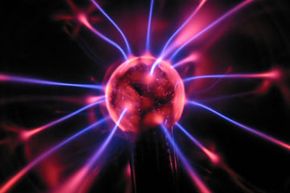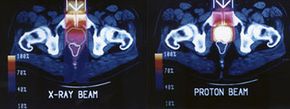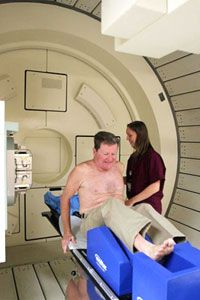Most people who are diagnosed with cancer face a pretty fearsome treatment plan that can include surgery, chemotherapy and/or radiation. Some will have to undergo all three. The lucky ones may only have to go through radiation treatment, which requires no cutting and probably won't have them throwing up every hour or so for a week. But even then, they're not that lucky. Traditional radiation treatment using X-ray beams has its downsides, especially for children and for people with awkwardly placed tumors.
Radiation therapy for cancer is based on the idea of selective cell destruction, and it destroys cells using energy. High-energy particles damage a cell by altering its atoms.
Advertisement
Everything in the body is made up of atoms. Two or more atoms together create a molecule, and molecules are the working components of cells. The function and health of a molecule depends entirely on the composition of its atoms.
When high-energy particles enter the body and run into atoms, they basically cause the atom's electrons to become so excited (energized) that they bounce out of their orbits, creating an atom that is ionized, or charged. A charged atom is very different from a non-charged atom, and this change causes damage to the molecule. The molecule can't work the way its supposed to if its atoms are altered. Enzymes in the cell rush to repair this molecular damage, but cancer cells are slower than healthy cells to create these enzymes. The end result is that more cancer cells than healthy cells end up dying from the radiation exposure.See the next page to learn how proton beam therapy can reduce radiation exposure.
Advertisement


